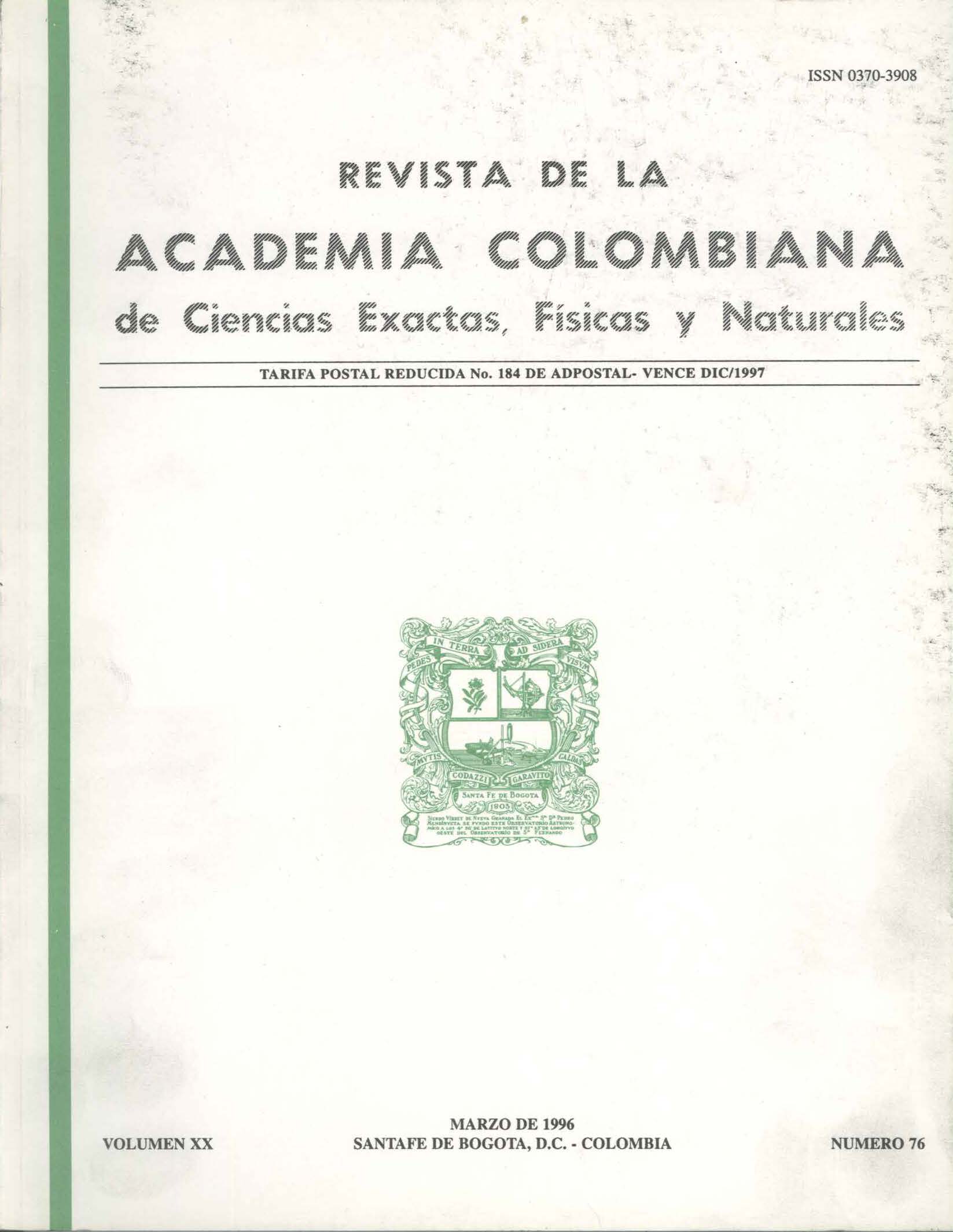Resumen
Se presenta una deducción de las ecuaciones diferenciales de primer orden que rigen el problema de los dos cuerpos en tres dimensiones tomando como variables la velocidad, el azimut, el ángulo de vuelo y las coordenadas esféricas. También se incluye la deducción de las ecuaciones cuando se presenta la fuerza de perturbación generada por el achatamiento del cuerpo central. La transformación directa entre éstas y las coordenadas rectangulares (y la inversa) es expuesta.
Referencias
Baldwin, B. & Y. Sheaffer. 1971. Ablation and breakup of large meteoroids during atmospheric entry. J. Geophys. Res. 76 (19): 4653-4668.
Brouwer, D. 1959. Solution of the problem of artificial satellite theory without drag. Astron. J. 64 (1274): 378-397.
Brouwer, D. & G. Clemence. 1961. Methods of celestial mechanics. Academic Press, Londres.
Cowell, P. & A. Crommelin. 1910. Investigation of the motion of Halley's comet from 1759-1910. Appendix to Greenwich Observations 1909. Neill, Bellevue, Londres.
Everhart, E. 1985. An efficient integrator that uses Gauss-Radau spacings. Dynamics of comets: Their origin and evolution, Carusi y Valsecchi (eds.): 185-202.
Feeley, T. & J. Speyer. 1993. Approximate optimal guidance for the advanced launch system. NASA Contractor Report 4568.
Garfinkel, B. 1959. The orbit of a satellite of an oblate planet. Astron. J. 64 (1274): 353-367.
Goldstein, H. 1963. Mecánica clásica. Aguilar Ediciones, Madrid.
Irigoyen, R. & C. Simó. 1993. Non-integrability of the J2 problem. Cel. Mech. & Dyn. Astron. 55 (3): 281-287.
Kaula, W. 1966. Theory of satellite geodesy. Blaisdell Publ. Comp., Waltham, Massachusetts.
Kinoshita, H. & H. Nakai. 1989. Numerical integration methods in dynamical astronomy. Cel. Mech. & Dyn. Astron. 45 (3): 231-244.
Kinoshita, H. & H. Yoshida. 1991. Symplectic integrators and their application to dynamical astronomy. Cel. Mech. & Dyn. Astron. 50 (1): 59-71.
Kosai, Y. 1959. The motion of close Earth satellites. Astron. J. 64 (1274): 367-377.
McCuskey, S. 1963. Introduction to celestial mechanics. Addison-Wesley, Reading, Massachusetts.
Seidelmann, P. K. 1992. Explanatory supplement to the astronomical almanac. University Science Books, Mill Valley, California.
Standish, E. 1982. The JPL planetary ephemerides. Cel. Mech. & Dyn. Astron. 26 (2): 181-186.
Stiefel, E. & G. Scheifele. 1971. Linear and regular celestial mechanics. Springer-Verlag, Berlin.
Teukolsky, S. 1992. Numerical recipes in Fortran. Cambridge Univ. Press, New York.

Esta obra está bajo una licencia internacional Creative Commons Atribución-NoComercial-SinDerivadas 4.0.

